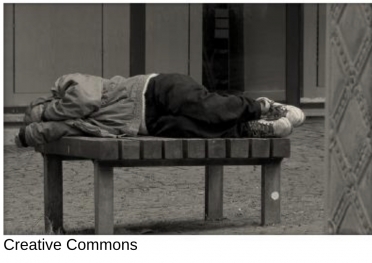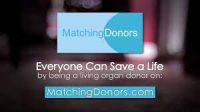 By David R. Shorey, East County Program Manager, Institute for Public Strategies
By David R. Shorey, East County Program Manager, Institute for Public Strategies
Update: The Point-in-Time Homeless Count has been postponed until February 24.
January 5, 2022 (San Diego's East County) - More than 1,000 people were homeless in the East County in 2019, making up 13% of the county’s total. Only the city of San Diego had more. That’s according to the 2019 Regional Task Force on the Homeless (RTFH) Annual Report on Homelessness. El Cajon accounted for 10% of that total with 787 counted during the We All Count Point-in-Time Count. The PITC is a federally mandated requirement designated by the Department of Housing and Urban Development (HUD) that counting unsheltered people experiencing homelessness be conducted every other year. While San Diego County has usually chosen to conduct the count annually, it was canceled in 2020 due to the pandemic. It’s back on for this year.
HUD designates the RTFH as the San Diego region’s Continuum of Care (CoC), designed to promote communitywide commitment to the goal of ending homelessness. The East Region stretches from La Mesa, Lemon Grove and Spring Valley on the west to the Mountain Empire in the east. Its vertical border stretches from Lakeside on the north, to the border with Mexico. For this year’s count, the RTFH is collaborating with the San Diego County Health and Human Services Agency, elected officials, nonprofits, community groups, faith-based organizations and other volunteers from throughout the region.

East County Homeless
Both sheltered and unsheltered people experiencing homelessness are counted during the We All count effort. That’s where the 787 for El Cajon was tabulated. Lakeside had 72 in 2019; Spring Valley and Casa de Oro had 67; La Mesa with 46; while Lemon Grove and Santee each had 35. Ten were counted in the Alpine-Crest-Dehesa area. There were 14 people experiencing homelessness in Ramona, which the County includes in the North Inland Region.
There is a vicious cycle between poor health and homelessness. People living unsheltered outdoors are at greater risk of health problems. While at the same time, poor health can contribute to homelessness. Those experiencing homelessness are prone to limited access to health care, access to enough healthy food, lack of personal safety, stress and violence, unsanitary living conditions and severe weather exposure. Some common health problems can include substance misuse, mental health issues, HIV/AIDS, malnutrition, wounds and skin infections and lung diseases, including bronchitis, tuberculosis and pneumonia.
 Homeless Deaths
Homeless Deaths
Countywide, homeless deaths due to drug overdose are increasing. Accidental overdoses accounted for almost 40% of deaths in 2018, 49% in 2019, and 59% in 2020. It is expected that by 2021, this rate will have increased.
How do so many people become homeless in the first place? Poverty, unemployment and lack of affordable housing are likely places to start when searching for a cause. Mental health challenges and substance use disorders are also high on the list. Other causes include trauma and violence,domestic violence, involvement in the justice system, sudden serious illness, divorce, death of a partner or parent and various disabilities.
Demographics can influence the statistical makeup of those who are homeless in San Diego County. Almost 70% are White, about the same percentage as the general population. But Black people are overrepresented. More than 23% make up the homeless population versus about 5% in the census population. About 70% of the homeless population is male and about 30% are female. About 81% of those counted were between the ages of 25 and 65. Substance use was reported by 12% and 24% said they had a mental health issue.
 Counting the Homeless
Counting the Homeless
Hundreds of volunteers will fan out across the East County and beyond Feb. 24, 2022 to count people living on the streets, in parks and in other open spaces. You can help by visiting the RTFHSD.org website or by clicking here. The count takes place between 4 and 8 a.m. and there is a brief online training required.
 IPS works alongside communities to build power, challenge systems of inequity, protect health and improve quality of life. IPS has a vision for safe, secure, vibrant and healthy communities where everyone can thrive. To find out more about IPS East County, follow us at: https://www.facebook.com/IPSEastCounty or by clicking on the links to our social media platforms: IPS East County Facebook, IPS East County Twitter, East County Youth Coalition Instagram.
IPS works alongside communities to build power, challenge systems of inequity, protect health and improve quality of life. IPS has a vision for safe, secure, vibrant and healthy communities where everyone can thrive. To find out more about IPS East County, follow us at: https://www.facebook.com/IPSEastCounty or by clicking on the links to our social media platforms: IPS East County Facebook, IPS East County Twitter, East County Youth Coalition Instagram.
IPS East County is funded by the County of San Diego Health and Human Services Agency, Behavioral Health Services












Recent comments